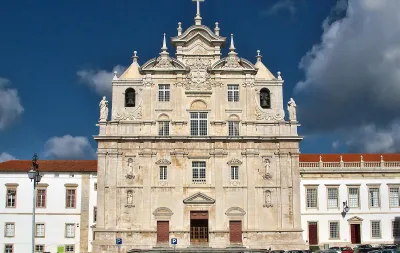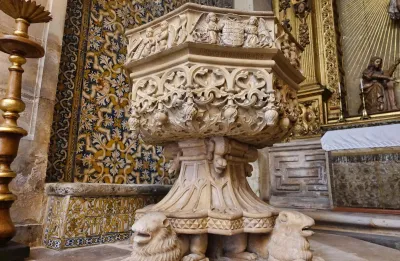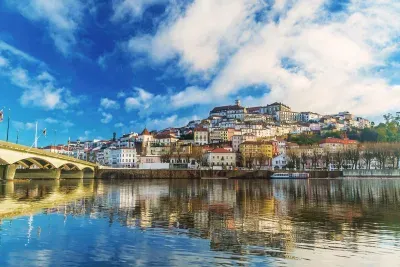
Sé Nova de Coimbra José Luis Filpo Cabana CC BY-SA
Manueline font in Sé Nova de Coimbra Joseolgon CC BY-SA
Interior of Sé Nova de Coimbra Joseolgon CC BY-SANew Cathedral of Coimbra
Sé Nova means new cathedral, but this is only relatively speaking. The cathedral building dates back to the late 16th century and was built by the Jesuit Order. However, in 1759 were banned from operating in Portugal by then prime-minister, the Marquis de Pombal.
With this spacious, modern church now vacant it was decided in 1772 that the episcopal seat be transferred from the old Romanesque cathedral to here. Henceforth this was referred to as the Sé Nova (New Cathedral) and the older church the Sé Velha (Old Cathedral).
The church itself still retains some of its Jesuit references such as the saints which look at from the lower part of the facade. The upper part of the facade was only completed in the early 18th century and is distinctly Baroque in style as compared to the Mannerist lower half.
Inside the church there is a barrel vaulted ceiling with a dome and cupola. The impressive main altarpiece is of gilt wood and flanked by a pair of wonderfully ornate Baroque pipe organs.
The 17th-century choir stalls of the main chapel were transferred from the Sé Velha, as was the beautifully carved octagonal stone baptismal font - the work of Pero and Felipe Henriques in late Gothic-manueline style.
Address
Largo Feira dos EstudantesCoimbra3000-213Phone
+351 239 823 138Attraction type

Coimbra travel guide »
In terms of historic significance and romantic beauty, Coimbra is second only to Lisbon and Oporto. Its ancient buildings cling to the side of the hill that rises above the curves of the river Mondego, the ornate buildings of the famous University of Coimbra are its crowning glory. Indeed the university is still the lifeblood of the city and the change in atmosphere is notable when the…